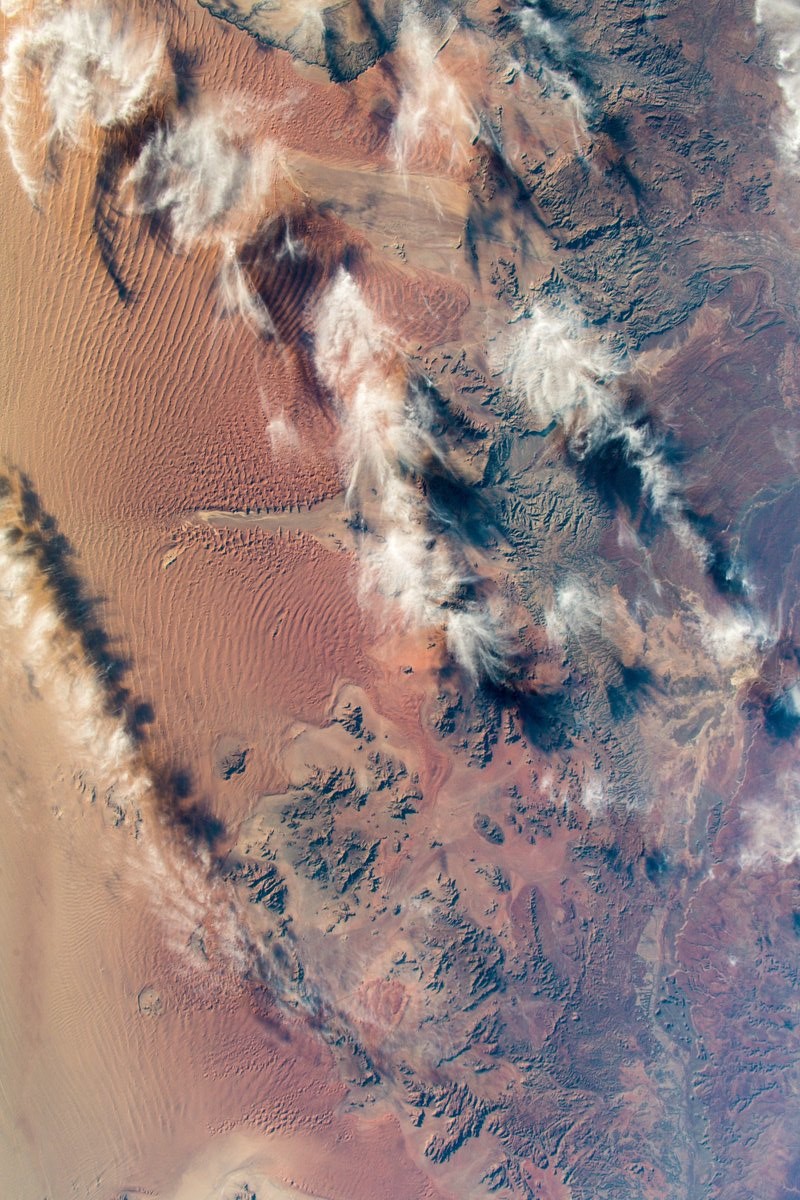[:ja]アレックス・ゲルスト宇宙飛行士がISSから撮影したナミビアのナミブ砂漠です。

ナミブ砂漠は約8000万年前に生まれた世界で最も古い砂漠で、大西洋を北上する寒流・ベンゲラ海流の影響で生じた典型的な西岸砂漠です。南北1,288km、東西は幅48kmから161km、面積約50,000km2にわたる広大な砂漠です。「ナミブ」は主要民族であるサン人の言葉で、「何もない」という意味です。大西洋を北上する寒流・ベンゲラ海流の影響で生じた典型的な西岸砂漠ですが、鉄分が付着し酸化するため、酸化鉄の色によって砂は白から赤く変色します。
地上の様子はこちらです。

参考文献: Alex Gerst’s Tweet
地球俯瞰画像を見る: LiVEARTH
[Earthview Wonders] No.801: Desert Art of Namibia🇳🇦
Astronaut Alex Gerst captured from ISS Namib Desert, Namibia.

The Namib is a coastal desert, the name of which is of Nama origin and means “vast place”. The Namib stretches for more than 2,000km along the Atlantic coasts of Angola, Namibia, and South Africa. Having endured arid or semi-arid conditions for roughly 55–80 million years, the Namib is considered the oldest desert in the world. Coastal regions can experience more than 180 days of thick fog a year.
The local scenery on the ground is as follows.
Reference: Alex Gerst’s Tweet
See earthview photo gallery: LiVEARTH[:en][Earthview Wonders] No.801: Desert Art of Namibia🇳🇦
Astronaut Alex Gerst captured from ISS Namib Desert, Namibia.

The Namib is a coastal desert, the name of which is of Nama origin and means “vast place”. The Namib stretches for more than 2,000km along the Atlantic coasts of Angola, Namibia, and South Africa. Having endured arid or semi-arid conditions for roughly 55–80 million years, the Namib is considered the oldest desert in the world. Coastal regions can experience more than 180 days of thick fog a year.
The local scenery on the ground is as follows.
Reference: Alex Gerst’s Tweet
See earthview photo gallery: LiVEARTH[:]